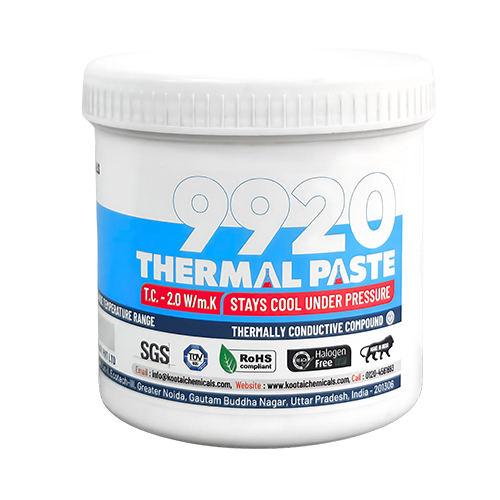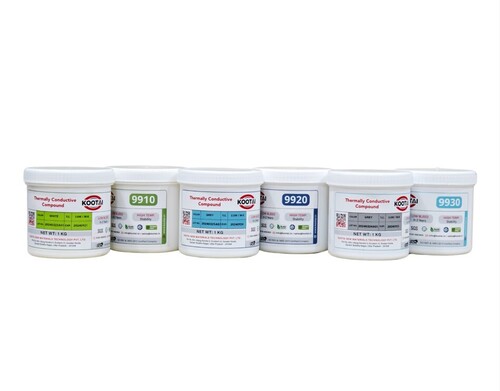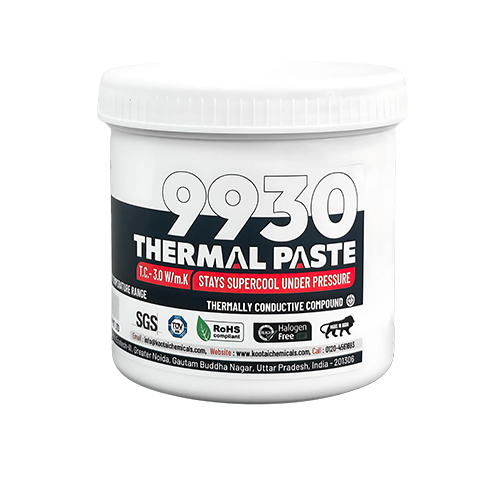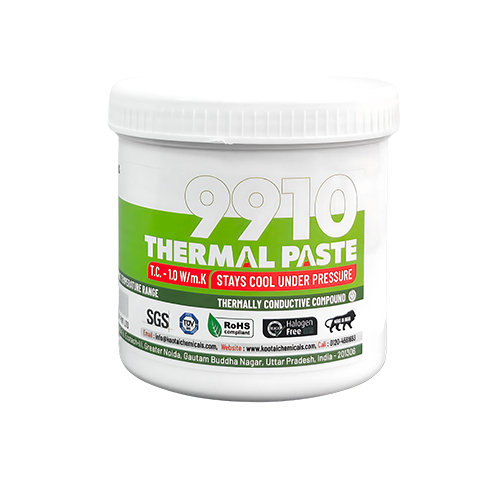- Home Page
- Company Profile
-
Our Products
- Silicone Sealant
- 9238W 300 ML RTV Silicone Sealant
- One Component RTV Silicone Sealant - 9238W
- One Component RTV Silicone Sealant - 9238B
- One Component RTV Silicone Sealant- 9237W
- One Component RTV Silicone Sealant- 9237B
- One Component RTV Silicone Sealant- 9239
- One Component RTV Silicone Sealant (Translucent) - 9307TL
- Thermally Conductive Compound
- Conformal Coating
- Silicone Potting
- SMT Red Glue
- Solder Paste
- Cleaner Liquid
- Solder Flux
- Thermal Adhesives
- Glue Dispensing Machine
- Silicone Potting Compounds
- SMT Adhesives
- Industrial Cleaners
- Silicone Sealant
- Contact Us
Thermally Conductive Compounds - 9920
1420 INR/Kilograms
Product Details:
- Usage Industrial
- Operating Temperature 50 to +200 Celsius (oC)
- Size Standard
- Color White
- Coating Conductive Compounds
- Click to View more
X
Thermally Conductive Compounds - 9920 Price And Quantity
- 1 Piece
- 1420 INR/Kilograms
Thermally Conductive Compounds - 9920 Product Specifications
- Conductive Compounds
- White
- Standard
- 50 to +200 Celsius (oC)
- Industrial
Thermally Conductive Compounds - 9920 Trade Information
- 250 Piece Per Month
- 2-4 Days
Product Description
Kootai 9920 Thermally Conductive Compound is a non-curing, high-performance thermal interface material (TIM) formulated to fill air gaps and promote efficient heat transfer between electronic components and heat sinks. This silicone-based paste offers a unique blend of low volatility (0.2%), minimal oil bleed (1.0%), and stable cone penetration (180210 mm) to maintain consistent performance across thermal cycles.
With a dielectric strength of 22 kV/mm, volume resistivity of 3.010 cm, and thermal resistance of 0.25 Cin/W, 9920 provides excellent electrical insulation and safety. It is non-toxic, odor-free, RoHS- and REACH-compliant, and available in White (W), Black (B), and Grey (G).
Industrial Application
- CPUs, ICs, and MOSFETs in computing and power electronics
- - Heat transfer for LED modules, transformers, and drivers
- - Thermal interface in LCDs, wireless receivers, laptops, and telecom gear
- - Cooling enhancement for DDR modules, power supplies, and industrial controls
Features
- - High thermal conductivity: 2.0 W/mK
- - Wide operating range: -50C to +200C
- - No curing required, remains a flexible grease
- - Excellent electrical insulation: 22 kV/mm
- - Low oil bleed and volatility, long-term reliability
- - Non-corrosive, odor-free, and RoHS/REACH/UL compliant
- - Available in W/B/G color variants and various packaging sizes
FAQ
Q1: What is 9920 used for?
A: It's designed as a thermal interface for CPUs, ICs, LEDs, MOSFETs, power modules, and heat-generating electronics.
Q2: Does it harden or cure over time?
A: No, it remains a grease. It does not require curing and retains flexibility, making it easy to rework.
Q3: Is it electrically insulating?
A: Yes. It has high dielectric strength (22 kV/mm) and excellent volume resistivity (3.010 cm), ensuring electrical insulation.
Q4: Is it compatible with plastics or metals?
A: Yes. It adheres well to most surfaces like aluminum, copper, plastics, and glass without corrosion.
Q5: How should it be stored and applied?
A: Store in a cool, dry place away from sunlight. Clean the substrate, then apply the paste directly between surfaces.
Tell us about your requirement

Price:
Quantity
Select Unit
- 50
- 100
- 200
- 250
- 500
- 1000+
Additional detail
Mobile number
Email







